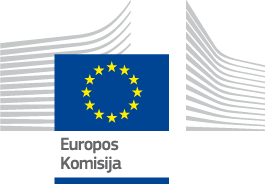

Country Factsheet
Ireland is surrounded by some of the most productive waters in the EU. The main challenges that CLLD will address in Ireland’s fisheries areas in the coming years are the creation of new sources of income and new jobs. To cope with these challenges, the seven Irish FLAGs aim to promote marine and eco-tourism by taking advantage of the local biodiversity and protected habitats. Additionally, they look to leverage synergies with national/local tourism initiatives and boost the business potential of the small-scale coastal fishing vessels.
The two largest ports by value of landings are Castletownbere (111M€), where 65% are landings are from foreign vessels and Killybegs (85M€) which is the biggest port for domestic landings. Aquaculture is a growth industry and increased in volume by 9% to 43 900 tonnes and 13% by value to 167M€ in 2016, with the growth coming from the Gigas Oyster and Salmon industries.
Employment in the seafood sector accounted for around 6 595 FTEs, with the catching sector accounting for about 2536 FTSs, aquaculture about 1 030 and processing 3 029 in 2016. It is estimated that there are over 11 000 people employed around the coast either directly or indirectly.
Contact details of the managing authority can be found here.
More information about national EMFF programmes can be found here.
In the previous programming period, Ireland had a total of 6 FLAGs, covering the whole coast line of Ireland, there were no inland FLAGs. Axis 4 projects were in general quite small in scale due to the limited budget allocated and the delays encountered in launching Axis 4 in Ireland; however, 187 of projects received funding in the programme.
These projects focused on coastal community rejuvenation, centring on the renewal of practices and skills in the Fishing, Aquaculture and Maritime related sectors with the primary aim of bringing added value to the FLAG Regions. Projects inspired innovation, business and enterprise, local job creation and social inclusion.
The main challenges that community-led local development will have to address in Ireland’s fisheries areas in the coming years is the creation of new sources of income and new jobs.
To cope with these challenges, the objectives for CLLD in Ireland 2014-2020 are therefore to promote marine and eco-tourism by taking advantage of the local biodiversity and protected habitats. Additionally, they will look to leverage synergies with national/local tourism initiatives and boost the business potential of the 1318 small scale coastal fishing vessels.
The number of FLAGs increased from 6 to 7, and continues to cover 100% of the coast line. Compared to 2007-2013, the total budget for CLLD has been increased greatly (from €0.778M to €12M), so the average budget per FLAG is much higher (from 0.26M € to budgets ranging from €1.3M to €1.9M).
There is no National Network unit in Ireland however there is networking is taking place at national level with the intention for all the seven FLAGs to meet twice a year together with the MA and IB. Communication is being encouraged at national level and a FLAG Chairs group has been established.
The seven Irish FLAGs are located around the whole Irish coast. The same length of coastline is covered as in the previous programme but the area in the south has been split into three FLAGs (South East, South West and South) where it was previously two FLAGs.
The Department of Agriculture, Food and the Marine is responsible for selecting FLAGs and acts as the Managing Authority, with Bord Iascaigh Mhara (BIM) being the Implementing Body. The call for FLAGs was launched in 2016 with approval of the FLAGs and their strategies being given in late 2016.
| Code | Name | Region | Surface area (km²) | Population | Population density (per km²) | Employment in fisheries* |
|---|---|---|---|---|---|---|
| IE201 | North FLAG | 2688 | 91406 | 34 | 1332 | |
| IE202 | North West FLAG | 4083 | 71675 | 18 | 300 | |
| IE203 | West FLAG | Connaught |
4510 | 134218 | 30 | 704 |
| IE204 | South West FLAG | 72863 | 550 | |||
| IE205 | South FLAG | 10940 | 107000 | 10 | 1520 | |
| IE206 | South East FLAG | Munster |
3177 | 161255 | 56 | 1011 |
| IE207 | North East FLAG | Leinster |
1630 | 164484 | 100 | 1054 |